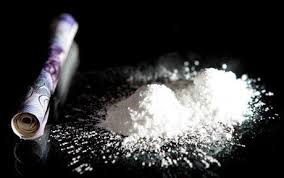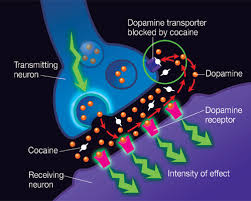Development of a cocaine addiction in life
Development of a cocaine addiction in life: The stimulant properties in cocaine

Development of a cocaine addiction in life can be eliminated through addiction trainings and teaching in this conference
The reason why cocaine is very addictive is because of its ability to copy or mimic certain chemicals in the brain. Experts have established that cocaine is a stimulant too, meaning that it operates by impersonating various chemicals in the brain which are responsible for the production and sending off messages of pleasures to the reward center. Doctor Akoury acknowledges that the stimulant properties of cocaine are contributing immensely in its addictiveness to its users thereby causing them to lose control of their lives to the drug. It is because of this loss of control that we want to take time at discuss the development of a cocaine addiction in life and also to look at the treatment options available.
To take us through the discussion, we are going to be relying on the expertise of doctor Dalal Akoury MD and also the founder of AWAREmed Health and Wellness Resource Center. Seeing the magnitude of the problem people are going through all in the name of drug addiction, Dr. Akoury made a decision to create this medical center primarily to help in the transformation of each and every individual’s life through increasing awareness about health and wellness and by empowering individuals to find their own inner healing power. Professionally, Dr. Akoury’s practice focuses on personalized medicine through healthy lifestyle choices (which are very important in dealing with all kinds of addiction) that deal with primary prevention and underlying causes instead of patching up symptoms. We are so privilege to have such experienced professionals within reach, meaning that if you are struggling with any kind of addiction, then you can schedule for an appointment with doctor Akoury today for the commencement of your treatment journey that will be done confidentially and with utmost professionalism.
Besides dealing with the individual patients in the quest of defeating drug addiction, doctor Akoury is also actively involved in the trainings of professionals. Through AWAREmed Health and Wellness Resource Center, doctor Akoury is offering her exclusive NER Recovery Treatment to other physicians and health care professionals through various methods including training, clinical apprenticeships, webinars, seminars and conferences. These are all working strategies that are usable in the fight against drug addiction and any qualified professional can now be a part of this truly successful and fast addiction recovery treatment. In line with that this coming August AWAREmed Health and Wellness Resource Center is organizing an Integrative Addiction Conference 2015 whose mission is to provide prevention education, awareness, options and support to patients and physicians dealing with addiction.
This conference is rich in new addiction treatment techniques and it is tailored to empowering physicians to be involved in determining their personal “best answer for addiction” and promoting physician/patient awareness of a natural, yet profoundly effective, addiction treatment options that result in you “thriving while surviving” during treatment and recovery. The Integrative Addiction Conference 2015 will cover topics such as:
- Addiction as a holistic body ecosystem derangement
- The interaction between stress, survivorship, pain and addiction
- The role of hormonal imbalance in the disease of addiction
- The genetic and epigenetic influences on the disease of addiction
- Psycho neuroendocrine immune restoration essential to reverse addiction as well as new and future therapies in the horizon for addiction treatment including stem therapy for psycho neuroendocrine immune restoration.
To all addiction medical professionals out there, this is a must attend conference and if that is all you have been looking for, then you can make further enquiries through www.integrativeaddiction2015.com or email sharon@integrativeaddiction2015.com. In the meantime let us continue with the discussion about the development of a cocaine addiction in life. As we had mentioned cocaine is a stimulant, which means that it works by mimicking chemicals in your brain, producing and sending off messages of pleasure to the reward center similar to adrenaline, the effects emanating as a result of using this stimulant will actually increase your heart rate, breathing rate, and blood pressure. Alongside that, cocaine will cause your blood vessels to contract, your pupils to dilate, and body to release sugar and fat into your bloodstream. The consequence of this is will be an energized brain with increased alertness. Not only that, but cocaine can cause a spike in feelings of fear, anxiety, anger, exhilaration, euphoria, and other extremes.
Development of a cocaine addiction in life: Identifying Cocaine Addiction
It is important to note that when it comes to cocaine, even unintentional or minimal usage of this drug can lead to addiction. Ordinarily it wills starts with the body craving the drug and progressively moves to the mind thereby imprisoning the user psychologically by creating memories and the feelings of necessity. The stimulant provides sensations of happiness or pleasure to the mind, causing it to become more addicted to the experience. Doctor Akoury says that those who are addicted to cocaine typically become very obsessed on the drug to the extent of giving up basic needs in exchange of the substance. This may include forsaking regular meals, blocking out family and friends, and giving up all career goals and interests.
Development of a cocaine addiction in life: Cocaine Overdose Symptoms
We have dealt with this before however, when a person experiences too high of stimulation due to cocaine, they can suffer feelings of paranoia, panic, and even suffer from hallucinations. These life-threatening feelings can even potentially lead to seizures and strokes. Over time, the brain will become depressed by the local anesthetic effects of the drug, with coma and death become more of a risk.
Development of a cocaine addiction in life: Offering Successful Cocaine Addiction Treatment Programs
Finally treatment is the next reasonable thing that you must do when this problem is flowing in your system. Like for instance AWAREmed Health and Wellness Resource Center under the able leadership of Doctor Akoury’s care is a drug rehabilitation and treatment facility that has helped many people globally through tailor made treatment methods that enable patients to get their lives back from addiction. This facility is one in a million equipped with highly trained and experienced professional and certified staff who will do all it takes to care for even the most serious of substance addictions. We are here for you and will be waiting to receive you up on scheduling for an appointment with us for the commencement of your recovery program.
Development of a cocaine addiction in life: The stimulant properties in cocaine




